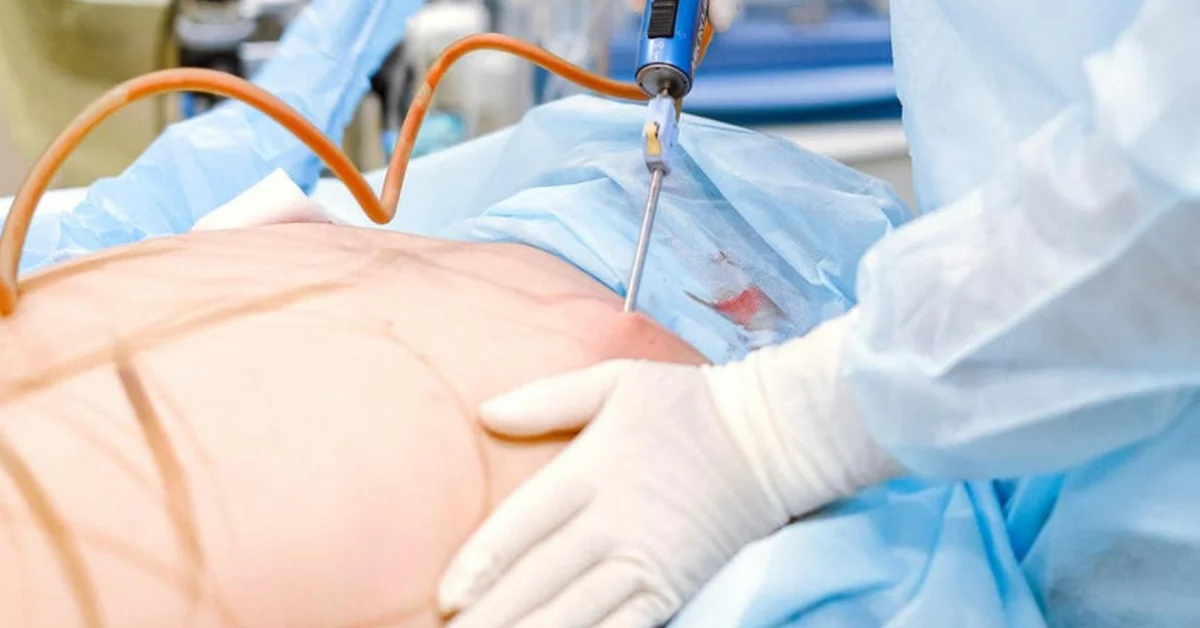- During the process of breast reconstruction, tissue expanders help the body to safely rebuild.
- The procedure can be done at the same time as a mastectomy or after a mastectomy has healed.
- Tissue expanders are eventually replaced with permanent breast implants.
- Complications are possible but rare.
What are tissue expanders?
For some women, treatment for breast cancer requires a mastectomy, removal of the affected breast. Through advancements in medical technology, your natural appearance can now be restored through breast reconstruction. Tissue expanders help in the transition from mastectomy to breast implant.
Tissue expanders make the most of the body’s ability to heal and regenerate. Your skin will automatically adjust to changes in underlying soft tissue. People who lose large amounts of weight are often left with excess skin which grew in response to a previous increase in fat. In much the same way, tissue expanders prompt skin tissue to grow and expand.
A tissue expander is a balloon-like device with a soft, expandable polymer shell designed to hold liquid. Dr. Matthew Martin, a cosmetic surgeon at Elite Plastic Surgery in Grand Rapids, MI, explains how it works: “A tissue expander is an empty breast implant that will be filled with normal saline or carbon dioxide over six to eight weeks. This process slowly stretches your skin and pectoralis muscle – the large muscle in your chest.” When it reaches the target size, the expansion process is over.
How do tissue expanders benefit the process of breast reconstruction?
A mastectomy greatly reduces blood supply to the leftover skin, since many of the small blood vessels in the breast tissue have been removed. Without first expanding the skin, the weight of a permanent breast implant can cause irreversible damage. By using a tissue expander, the breast skin can develop a new blood supply and become able to take on the weight and pressure of the implant.
Prior to the development of tissue expanders, plastic surgeons had to resort to skin grafts and skin flaps to reconstruct damaged tissue. These devices now offers a safe and reliable way to facilitate the breast reconstruction process.
Tissue expanders offer many other benefits, including:
- Short surgery times, ranging from 45 to 75 minutes
- Expanded skin is a near-perfect match to surrounding skin in texture, color, and hair ratio
- Minimal scar tissue, since the skin isn’t moved from one area to another, as in grafting
- Reduced risk of skin dying off, as often happens with grafting techniques, since the existing skin remains attached to nerves and blood vessels
How do tissue expanders work?
The process begins with the placement of the expander device, which can be done either at the same time as the mastectomy or after the body has healed. In order to place the expander, the surgeon creates a pocket in the chest and places the device inside of it. That pocket can be created under the pectoralis muscle, but more recent techniques place the implant above the muscle instead, which allows for quicker, less painful recovery.
Once inserted, the expander is then filled with saline, air, or in some cases, carbon dioxide. The device is equipped with a tiny valve that allows for additional, periodic injections over the course of several weeks or months.
The expander will continue to be filled until it’s just a bit larger than the desired size. At this point the skin has stretched enough so that it can safely hold a permanent implant or be used to reconstruct the breast without an implant. The nipple and areola are reconstructed during a separate procedure.
In many cases, a dermal matrix (like Alloderm or FlexHD) or a surgical mesh (like GalaFlex) will be used to cover the expander and support its position in the new pocket, and later providing structure and support for the implant. When placed under the muscle, these substances will be applied to the bottom of the expander; when the expander is placed over the muscle, it will be covered completely.
What is the recovery time after inserting a tissue expander?
Hospitalization times vary for inserting the tissue expander – placement over the muscle, outpatient procedure; placed under the muscle, one to two days. Total recovery time ranges from two to four weeks.
What do the different types of tissue expanders look like?
The different types of tissue expanders feature different options, all of which accomplish the same goal in their own ways. The traditional expanders use saline or air, whereas the newer types use carbon dioxide and offer additional features. One big difference between the various types is convenience; more specifically, how often you’ll have to visit the doctor.
The most common expander, the traditional model, uses saline or air. The surgeon uses a small needle to make injections into the expander valve under your skin. In this case you’ll need to make regular visits to the doctor until the expander reaches full size. Naturally, more visits mean that the traditional model is less convenient.
One of the newer models, the Air Expander, uses compressed carbon dioxide. That makes the device more user-friendly by allowing patients to fill it at home, on their own. A hand-held remote is used to fill the expander. At the push of a button, the carbon dioxide decompresses and a small amount is released into the expander shell.
Another newer design allows for a more controlled shaping effect but uses saline solution. The more sophisticated design allows surgeons to better fit the expander to their patient’s chest, producing more favorable outcomes but still requiring regular doctor visits.
Do tissue expanders hurt?
Since tissue expansion is a process and not a single procedure, patients experience different degrees of discomfort and pain along the way. Dr. Sachin Shridharani, a cosmetic surgeon at Luxurgery in New York City says that the placement of the tissue expander is associated with the same sort of pain typical of any surgical procedure. But he is much more reassuring about the rest of the process: “The expansion process is gradual, and a patient’s comfort guides how much expansion occurs in a single session.”
In most cases, surgical drains will prevent fluids, like blood and lymphatic fluid, from building up under the skin. A drain has a small ball-like shape that attaches via a tube to extend from the incision site. As incision sites tend to be sensitive, an accidental tug on the tubes can cause considerable pain. But this can be prevented by securing the tubes to clothing.
Filling the expander can also cause discomfort, felt as pressure, each time more saline, air, or carbon dioxide is added. This discomfort is worse when the expander is placed under the muscle and occurs as the chest muscle stretches in response to the expansion. Fortunately, the sensation doesn’t last long, typically passing after an hour or two.
What’s involved in the expander-implant exchange surgery?
In cases where breast reconstruction includes breast implantation, exchanging the expander for the implant requires a second procedure. The exchange typically occurs at least six weeks after the tissue expander was placed. On average, the procedure takes about one hour. Oftentimes, “balancing” procedures – such as breast lift, breast augmentation, or breast reduction – are done at the same time.
The two main choices for implants are saline- and silicone-based. Each one produces different effects in terms of shape, contour, and firmness. Both the patient and her doctor determine which implant will work best based on physical considerations and desired appearance.
Some women may also require fat grafting to enhance the soft tissue layer on top of the implant. This creates a thicker layer of tissue that protects the implant, hides the waves in the implant shell, and creates a more aesthetically pleasing effect. Fat grafting is also used to fill in contour defects left behind by the mastectomy. For nipple and areola reconstruction, a third procedure is performed two to four months after the exchange surgery.
Are there risks from tissue expander procedures?
While tissue expander procedures are fairly straightforward, any form of surgery carries certain risks. Complications can happen but only occur in a small percentage of cases. Possible risks include:
- Slow wound healing
- Breast pain
- Infection
- Scarring
- Inflammation
- Swollen lymph nodes
Although there are risks, tissue expanders allow the body’s soft tissues to develop during the breast reconstruction process, which ultimately enhances the end result.









